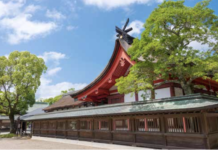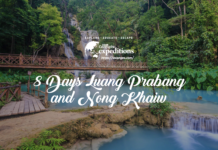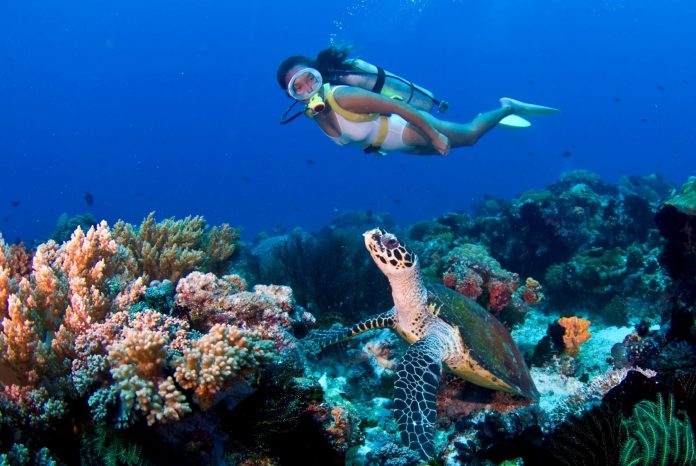
The island province of Negros Oriental in the Philippines is a haven for explorers who prefer off-the-beaten-track adventures
Text Roni Ben-Aharon
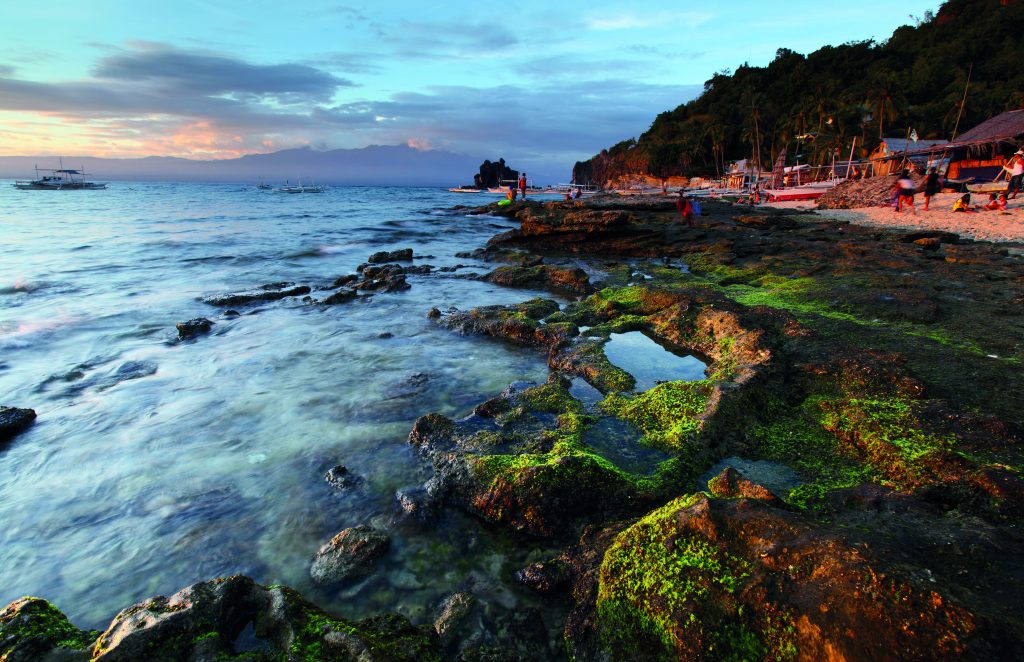
We pull off from the black sand beach on a bangka (an elongated wooden boat), heading southeast towards Apo Island, a tiny green speck on the horizon. Within minutes of leaving shore, Atlantis Resort vanishes behind the narrow shoreline amidst the tall, swaying coconut trees. The island becomes its own sea of green, set against a dramatic backdrop: The peaks of the dormant volcano Bukid Talinis (bukid meaning “mountain”) towering at 1,903 metres above sea level, reach into a cloudless sky. From this vantage point, it’s hard to believe nearly 30,000 people live here, in Dauin, as you can see little sign of human life once you’re a mile offshore.
Apo means “grandchild” in Tagalog, the Philippines’ national language, and so this small island is referred to as the “grandchild” of Negros. Less than a square kilometre in size, the island is surrounded by the Philippines’ first community-organised marine reserve, established in the late 1980s. It is home to nearly 1,000 people; the waters hugging its shores boast 650 documented species of fish and over 400 species of corals, allowing divers the opportunity to see the majority of the 450 coral species indigenous to the archipelago. The reef is healthy and colourful, with a variety of both hard and soft corals. While snorkelling, we spot jackfish, barracuda, a banded sea snake and hawksbill turtles.
Just seven kilometres away from this diver’s paradise is the southeastern tip of Negros Island in Negros Oriental Province. Negros is the fourth largest island in the Philippines, home to four million people – only two percent of the nation’s population of around 100 million people, spread around its 7,641 islands. This lush volcanic island offers an abundance of little explored terrestrial and aquatic wonders, and a laidback environment without hordes of tourists.
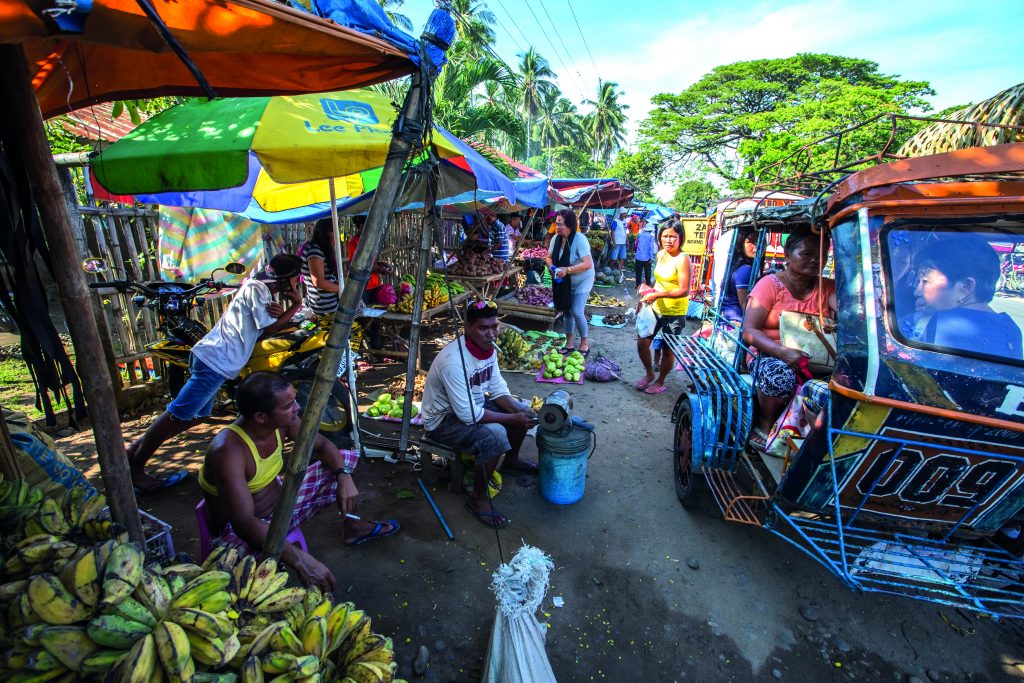
The name of the island is hardly politically correct in contemporary times; when the Spaniards arrived in April 1565, they named it after the island’s original inhabitants, the negritos (which translates to “little black people”). The volcanic land is incredibly fertile, but there are only two commercial farming industries: sugarcane (Negros produces half of the Philippines’ sugar) and coconut. The rest of the agricultural operatives consist of small farms. Colourful markets and stalls line the streets, selling locally-grown fresh produce such as siniguelas – a little round green fruit that, when discovered by the rest of the world, may well be touted as a “superfood”, and ube, a purple potato which is sometimes used to make a lurid purple ice cream.
Negros Oriental’s vivid “rurban” centre is Dumaguete, a small town by other standards, with around 150,000 people, but it is the city in this provincial area, with a dozen universities and colleges, three hospitals, a mall with a cinema, and numerous local businesses.
We take the Atlantis Jeepney, an experience on its own, and head to Malatapay Market. This fleet of mustard yellow US military buses was left behind after WWII and converted by locals into these hand-painted, colourful public transportation vehicles.
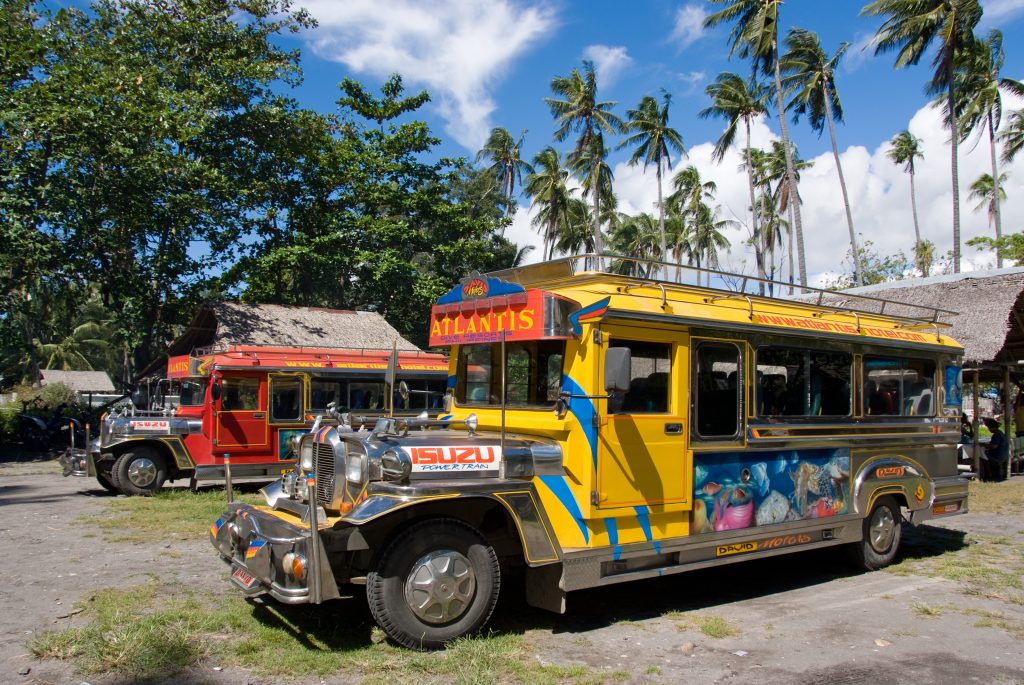
Malatapay is a hive of activity with a weekly gathering of farmers selling everything from cattle to flip-flops and bamboo furniture. The highlight here is the variety of local food: lechon (a whole roasted pig), banana que (using the local variety of short banana, which is coated in sugar and grilled on a stick) and the selective delicacy that is balut (a hard boiled, fully-developed duck embryo). After drinking buku (fresh young coconut), we embark on a city tour of Dumaguete.
We visit Silliman University – a prestigious private school boasting a small anthropology museum with a magnificent gem collection – and the oldest bell tower in the Visayas. Driving along the coastal boulevard, we sample silvanas, a tasty frozen meringue-like cookies with layers of buttercream, coated with crumbs. This Dumaguete specialty is the gift of choice Filipinos take home from Negros, and so the airport’s departure terminal is peppered with people carrying the signature blue-and-white cookie cartons.
The Philippines consists of six unique biogeographical areas – groups of islands once connected. During the last Ice Age, a 120-metre drop in ocean levels led to their separation, isolating various species such as the now-endangered Visayan spotted deer and the Visayan warty pig, as well as various small birds. It’s heaven for Nature enthusiasts, and avid ornithologists can get their binoculars out at Twin Lakes – two crater lakes at the foot of Mount Talinis – with over 114 bird species indigenous to this area, including the endangered Negros bleeding-heart and the Visayan wrinkled hornbill. Our incredibly knowledgeable guide, Jake, from the Negros Oriental Tourism Office, identifies all variety of whistles emanating from the canopy branches.
If you’re lucky enough to be visiting at the time of the full moon, visit the Manjuyod sandbar, a pristine strip of white sand that is only exposed during extremely low tides in the Tañon Strait. If you’d like to rent one of the basic stilted structures for the day (or the night), you’ll need to coordinate your trip in advance with the municipality. Otherwise, rent a private boat for the day from the nearby town of Bais, and combine your trip with a dolphin watching excursion.
A 30-minute drive from Dumaguete takes us to the town of Dauin, from where you take an exquisite muck diving trip. Here, an abundance of cool critters can be found, such as frogfish and ornate ghost pipefish. Offering easy dive conditions, this is a perfect spot to learn to dive, but it’s also an underwater photographer’s haven, with excellent conditions to capture unique marine critters, such as flamboyant cuttlefish eggs hatching.
Underwater thrills are a popular pastime in Negros, but there are also numerous activities on land: Caving is a huge attraction here, as there are several hundred underground caves on the island, mostly located in the municipality of Mabinay, about two hours’ drive north of Dumaguete. The most famous is Crystal Cave, housing 157-metre-long stalagmites and stalactites.
The area offers caving for all abilities; the more daring and experienced cavers venture to Habhaban Cave in Bayawan, located about an hour south of Dauin. Part of the experience is crawling your way through water – an effort that we’re told is worth once you reach the impressive underground waterfall. Sadly, due to serious flood alerts, we had to postpone this adventure.
Back above the ground, natural water sources are all over the island: The Casaroro Falls close to Dauin are a favourite photo opportunity. However, getting there requires a bit of grit, as you need to hike up some 300 steps and across slippery rocks. The view of the sheer drop of roaring water is incredible, and well worth it.
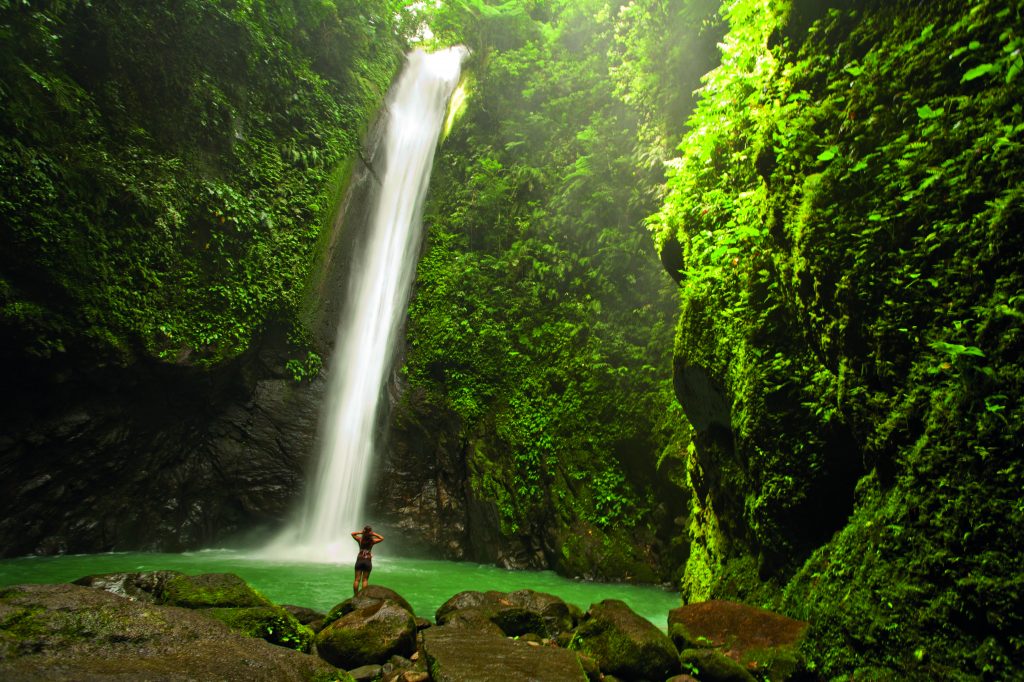
Related: Walking the Wilds
Related: The Big Durian
Related: Tuk-Tuk Adventures
Thankfully, the nearby Baslay Hot Springs (be warned: they follow another steep set of stairs!) offer the weary hiker the chance to take a load off and ease tired legs.
A quick stop at the Baslay Farmer Association – a community farming project that grows coffee and plants local trees to mitigate past destructive agriculture practices – is a good end to an active day, and allows you the chance to support this sustainable local initiative.
From there, it’s a short drive back to Atlantis Resort, to rest up with a view and a cocktail made with Tanduay – a delicious local rum.
For more stories and photographs from this issue, see Asian Geographic Issue 04/2017 No. 126





